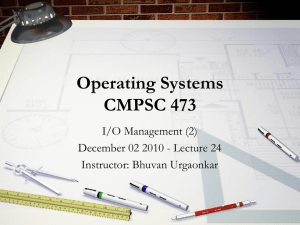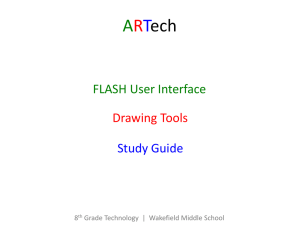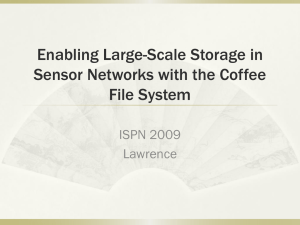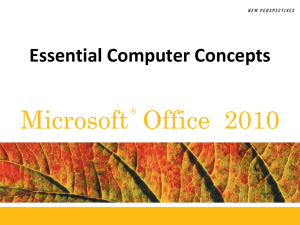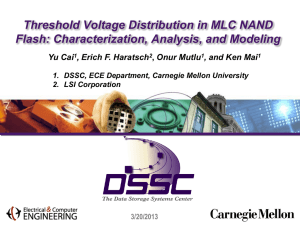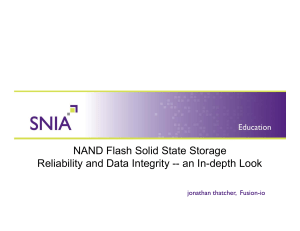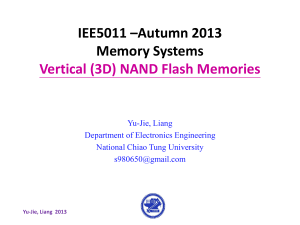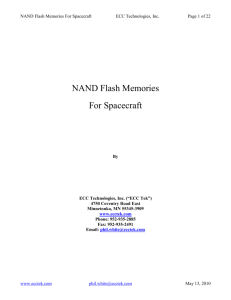Slides_11 - Real-Time Embedded Systems Lab
advertisement
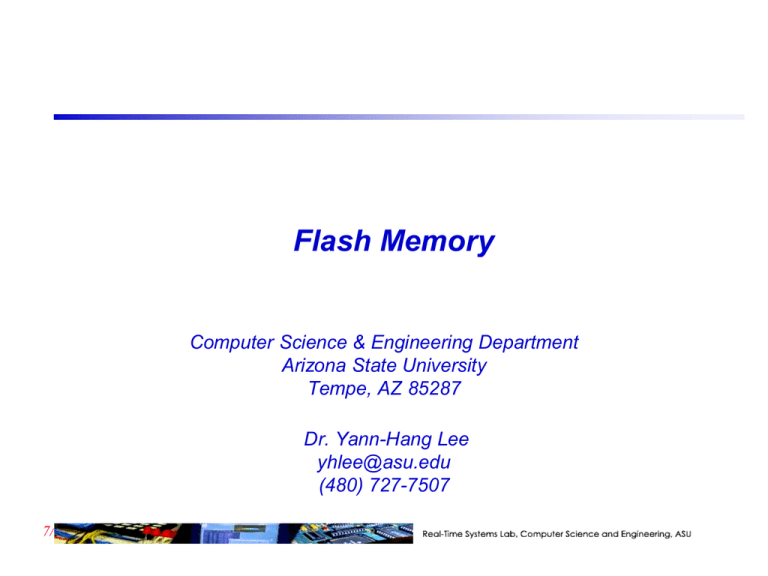
Flash Memory Computer Science & Engineering Department Arizona State University Tempe, AZ 85287 Dr. Yann-Hang Lee yhlee@asu.edu (480) 727-7507 7/23 Flash Memory A type of EEPROM (Electrically-Erasable programmable Read-Only Memory) an older type of memory that used UV-light to erase Non-volatile, solid state technology Relatively limited lifespan Information is stored in an array of memory cells made from floating-gate (FG) transistors Packaged inside a memory card: Extremely durable Can withstand intense pressure Immersion in water Better kinetic shock resistance than hard disks set 4 -- 1 USB Flash Memory 1. 2. 3. 4. 5. 6. 7. 8. USB connector USB mass storage controller device Test points Flash memory chip Crystal oscillator LED Write-protect switch (Optional) Space for second flash memory chip set 4 -- 2 Floating Gate Operation Not programmed No electronics trapped on floating gate WL=1 turns on transistor, pulling Bitline low Data out = 1 As floating gate has no effect Programmed Electronics is trapped on floating gate Increase threshold voltage Transistor remains off when WL=1 Bitline=1 and Data out=0 Sept 2007 3 Flash Memory Operations Write: programmed or not Read: Erase: make cells non- programmed write operation read operation erase operation set 4 -- 4 NOR and NAND Flash NOR NAND BL = NOR (all WL’s of non- BL= NAND (all WL’s of non- programmed cells) The word line of selected row high Un-programmed = 1 Programmed = 0 programmed cells ) All word lines high by default with exception of selected row Un-programmed = 1 Programmed = 0 set 4 -- 5 Comparison of NOR and NAND Flash NAND Flash cells are 60% smaller than NOR Flash cells Wear leveling: limit in the number of times NAND Flash blocks can reliably be programmed and erased. NAND Flash array: grouped into a series of blocks, which are the smallest erasable entities Random access time on NOR Flash < 0.075μs; on NAND Flash, for the first byte is significantly slower > 10μs NAND Flash: faster PROGRAM and ERASE times Advantage Disadvantage Applications NAND Fast PROGRAMs Fast ERASEs Byte Slow random access Byte PROGRAMs difficult File (disk) applications Voice, data, video recorder NOR Random access PROGRAMs possible Slow PROGRAMs Slow ERASEs Replacement of EPROM Execute directly from nonvolatile memory Any large sequential data set 4 -- 6 Parallel and Serial Flash Chips Parallel interface Direct control of flash memory operations Read, program, erase (sector or chip), write inhibit, standby Byte programming software id phase load address and data Program (20s) Serial interface (SPI, I2C, microwire) Send commands and receive responses Read, program (auto-increment), erase Status, write protection, etc. set 4 -- 7 Coldfire Flash Module Interfaces As a read-only memory to the ColdFire core A backdoor mapping for all program, erase, and verify operations, as well as providing a read datapath for the DMA. May be programmed via the EzPort, which is a serial Flash programming Flash Configuration field (24 bytes) Stored in flash memory base+0x400 Protection and access restriction On reset, read in the field to Flash controller Flash program using BDM set 4 -- 8

